Amin Vahedian
LISA: Learning-Integrated Space Partitioning Framework for Traffic Accident Forecasting on Heterogeneous Spatiotemporal Data
Dec 19, 2024Abstract:Traffic accident forecasting is an important task for intelligent transportation management and emergency response systems. However, this problem is challenging due to the spatial heterogeneity of the environment. Existing data-driven methods mostly focus on studying homogeneous areas with limited size (e.g. a single urban area such as New York City) and fail to handle the heterogeneous accident patterns over space at different scales. Recent advances (e.g. spatial ensemble) utilize pre-defined space partitions and learn multiple models to improve prediction accuracy. However, external knowledge is required to define proper space partitions before training models and pre-defined partitions may not necessarily reduce the heterogeneity. To address this issue, we propose a novel Learning-Integrated Space Partition Framework (LISA) to simultaneously learn partitions while training models, where the partitioning process and learning process are integrated in a way that partitioning is guided explicitly by prediction accuracy rather than other factors. Experiments using real-world datasets, demonstrate that our work can capture underlying heterogeneous patterns in a self-guided way and substantially improve baseline networks by an average of 13.0%.
HintNet: Hierarchical Knowledge Transfer Networks for Traffic Accident Forecasting on Heterogeneous Spatio-Temporal Data
Mar 07, 2022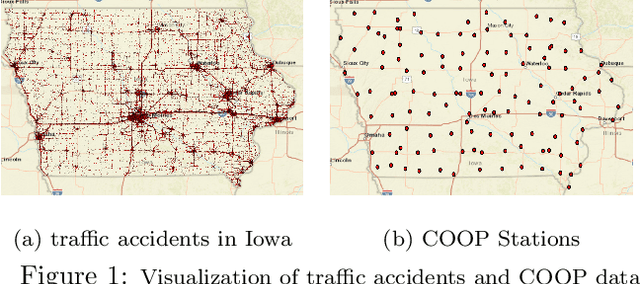

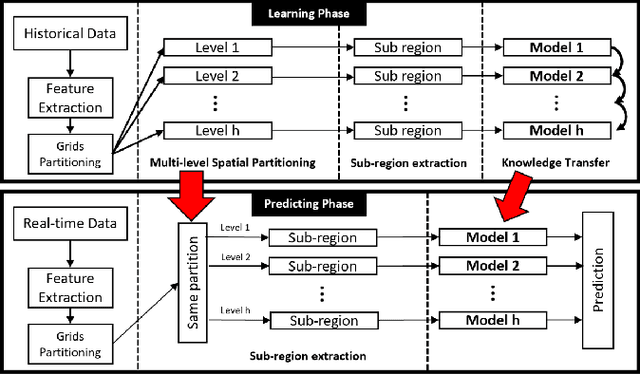
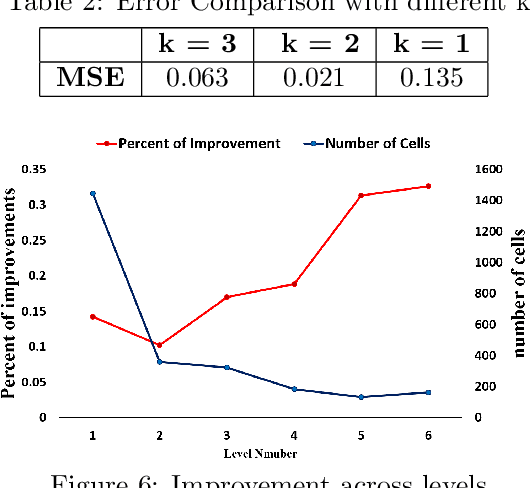
Abstract:Traffic accident forecasting is a significant problem for transportation management and public safety. However, this problem is challenging due to the spatial heterogeneity of the environment and the sparsity of accidents in space and time. The occurrence of traffic accidents is affected by complex dependencies among spatial and temporal features. Recent traffic accident prediction methods have attempted to use deep learning models to improve accuracy. However, most of these methods either focus on small-scale and homogeneous areas such as populous cities or simply use sliding-window-based ensemble methods, which are inadequate to handle heterogeneity in large regions. To address these limitations, this paper proposes a novel Hierarchical Knowledge Transfer Network (HintNet) model to better capture irregular heterogeneity patterns. HintNet performs a multi-level spatial partitioning to separate sub-regions with different risks and learns a deep network model for each level using spatio-temporal and graph convolutions. Through knowledge transfer across levels, HintNet archives both higher accuracy and higher training efficiency. Extensive experiments on a real-world accident dataset from the state of Iowa demonstrate that HintNet outperforms the state-of-the-art methods on spatially heterogeneous and large-scale areas.
Predicting Urban Dispersal Events: A Two-Stage Framework through Deep Survival Analysis on Mobility Data
May 03, 2019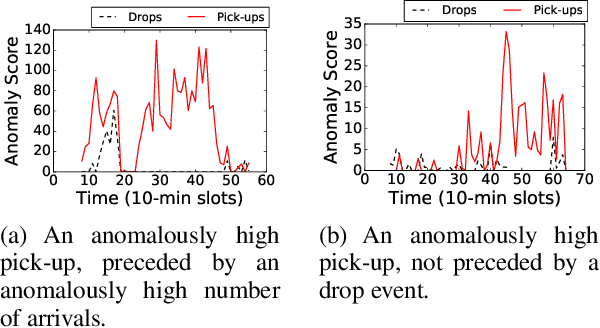

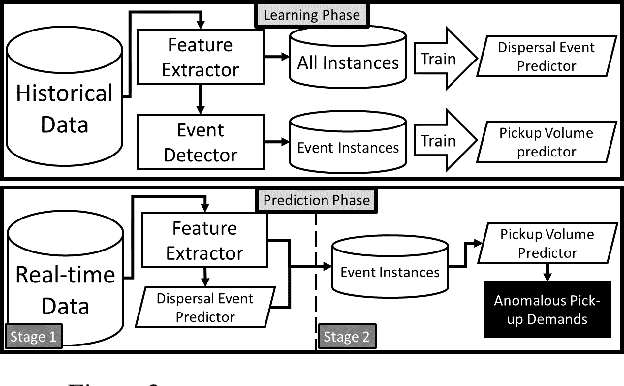
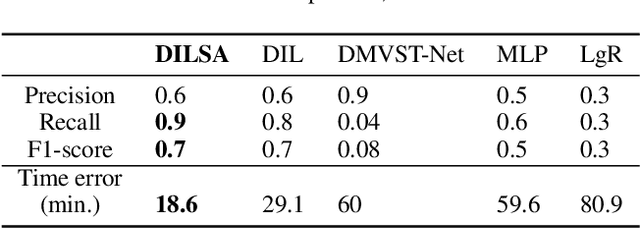
Abstract:Urban dispersal events are processes where an unusually large number of people leave the same area in a short period. Early prediction of dispersal events is important in mitigating congestion and safety risks and making better dispatching decisions for taxi and ride-sharing fleets. Existing work mostly focuses on predicting taxi demand in the near future by learning patterns from historical data. However, they fail in case of abnormality because dispersal events with abnormally high demand are non-repetitive and violate common assumptions such as smoothness in demand change over time. Instead, in this paper we argue that dispersal events follow a complex pattern of trips and other related features in the past, which can be used to predict such events. Therefore, we formulate the dispersal event prediction problem as a survival analysis problem. We propose a two-stage framework (DILSA), where a deep learning model combined with survival analysis is developed to predict the probability of a dispersal event and its demand volume. We conduct extensive case studies and experiments on the NYC Yellow taxi dataset from 2014-2016. Results show that DILSA can predict events in the next 5 hours with F1-score of 0.7 and with average time error of 18 minutes. It is orders of magnitude better than the state-ofthe-art deep learning approaches for taxi demand prediction.
 Add to Chrome
Add to Chrome Add to Firefox
Add to Firefox Add to Edge
Add to Edge